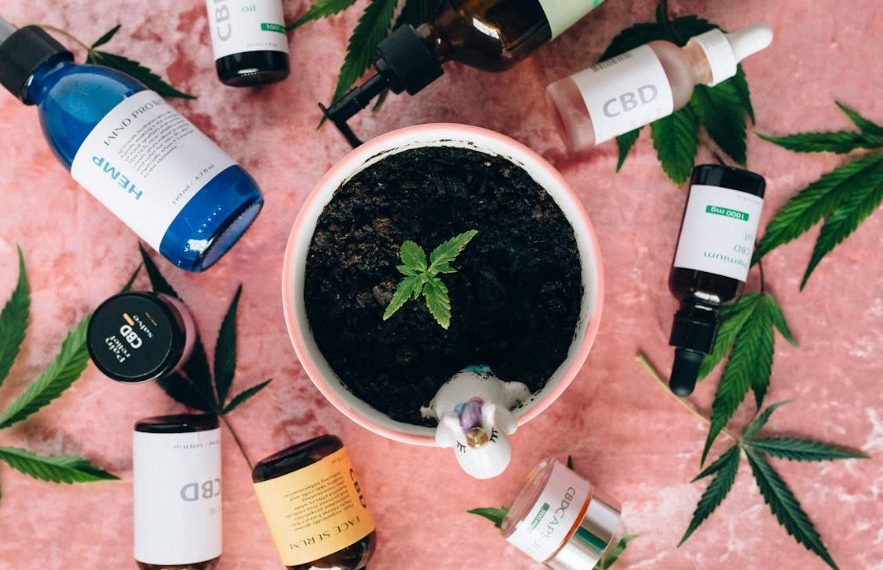Transplantation, or re-homing, is an indispensable process in the cannabis cultivation journey. As seedlings outgrow their initial containers, transplanting them into larger pots with fresh soil becomes crucial for their continued growth and development. This intricate procedure not only provides the plant’s root system with ample space to expand but also replenishes essential nutrients, ensuring a robust and bountiful harvest.
Why Transplanting Cannabis Plants is Pivotal
A cramped root system can severely impede a cannabis plant’s growth, leading to a condition known as “rootbound.” When roots become entangled and unable to spread out, the plant effectively suffocates, resulting in stunted growth, discoloration, nutrient deficiencies, and, in extreme cases, premature death. Transplanting at the appropriate intervals allows the roots to stretch out, fostering a healthy, vigorous plant capable of reaching its full potential.
Transplanting Cannabis Seedlings: A Step-by-Step Guide
The transplantation process requires meticulous care and attention to detail to minimize the risk of transplant shock and ensure a smooth transition for your precious cannabis seedlings.
Preparing for the Transplant
- Gather your supplies: gloves, new container(s), fresh potting soil, and a gentle watering can or spray bottle.
- Sterilize your work area and tools to prevent contamination.
- Lightly water the seedling to help minimize shock during the transplant process.
Executing the Transplant
- Fill the new container with fresh potting soil, leaving enough space for the seedling’s root ball.
- Gently remove the seedling from its current container, being careful not to disturb or damage the delicate root system.
- Create a hole in the center of the new container’s soil and gently place the seedling, ensuring the root ball is fully covered.
- Lightly pack the soil around the base of the plant, avoiding excessive compaction, which can compromise drainage and root development.
- Water the transplanted seedling thoroughly, ensuring the soil is evenly moist but not waterlogged.
Post-Transplant Care
- Provide the transplanted seedling with ample lighting, but avoid intense, direct light for the first few days to minimize stress.
- Monitor the plant closely for signs of transplant shock, such as wilting or discoloration, and adjust conditions accordingly.
- Avoid disturbing the plant unnecessarily during the first week or two, allowing it to recover and establish its new root system.
Transplanting Mature Cannabis Plants
As your cannabis plant matures, it may require additional transplants to accommodate its increasing size and nutrient demands. Follow the same basic principles outlined above, but be sure to handle the plant with extra care to avoid damaging the more extensive root system.
Transplanting the Cannabis Plants
Transplanting the cannabis seedlings is crucial for the successful cultivation of weed and requires a nuanced understanding of cannabis growth requirements. For marijuana strains like the Bruce Banner strain is known for its high THC content and balanced sativa-indica hybrid nature and offers a myriad of benefits that make it a sought-after choice for both medicinal and recreational users.
Known for its high THC levels, which can reach up to 29%, Bruce Banner delivers an energizing and uplifting mood followed by relaxation, making it ideal for daytime use. Its medicinal uses are notable, with anecdotal evidence suggesting efficacy in managing conditions such as chronic pain, stress, and mood disorders. The strain’s balanced effects stem from its genetic makeup, which combines the cerebral elevation characteristic of sativas with the bodily relaxation typical of indicas, making it a versatile option for a wide range of users.
Determining When to Transplant Cannabis Seedlings
Identifying the optimal timing for transplantation is a delicate balance. Several indicators can signal when a cannabis seedling is ready for its new home:
Leaf Development
Young plants typically require transplanting after sprouting their fourth or fifth set of true leaves. However, this timeline can vary slightly depending on the strain’s characteristics.
Root Emergence
Inspect the drainage holes at the bottom of the container. If you notice white, healthy roots protruding from these openings, it’s a clear sign that the plant has outgrown its current abode and requires more space.
Discoloration and Rootbound Symptoms
Any discoloration or darkening of the roots may indicate that the plant has become rootbound, necessitating an immediate transplant. Other symptoms include flimsy new growth, stunted flower production, stem discoloration, nutrient sensitivity, and frequent watering requirements.
Vegetative Stage Progression
Ideally, a cannabis plant should be transplanted into its final, spacious container or directly into the ground before entering the flowering stage. During this critical phase, the plant will experience a surge in growth and bud development, demanding ample room for robust root expansion.
Determining the Optimal Container Size
Selecting the appropriate container size is crucial for ensuring your cannabis plant’s healthy growth. As a general guideline, provide at least double the space of the previous container during each transplant. This approach minimizes the risk of transplant shock and reduces the frequency of transplantations.
Here’s a handy reference chart to help you choose the right container size based on your plant’s height:
Plant Height (inches)
Recommended Pot Size
0-6″
4-inch (16 oz.)
6-12″
1-gallon
12-24″
3-gallon
24-42″
5-gallon
42-60″
10-gallon
60-84″
20-gallon
Remember, it’s better to err on the side of caution and provide slightly more space than needed. A general rule of thumb is to allocate 2 gallons of soil for every 12 inches of anticipated growth during the vegetative stage.
Maximizing Your Cannabis Yield with Proper Transplantation
Transplanting cannabis seedlings and mature plants at the appropriate intervals is crucial for achieving a bountiful, high-quality harvest. By providing ample space for root expansion and replenishing essential nutrients, you create an environment conducive to robust growth, vigorous flowering, and ultimately, a rewarding cannabis cultivation experience.








